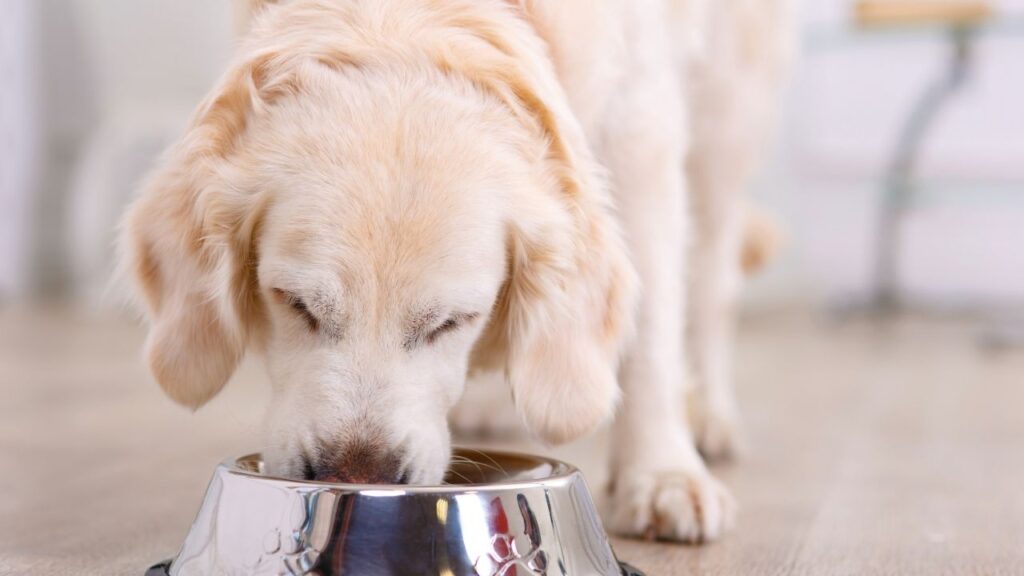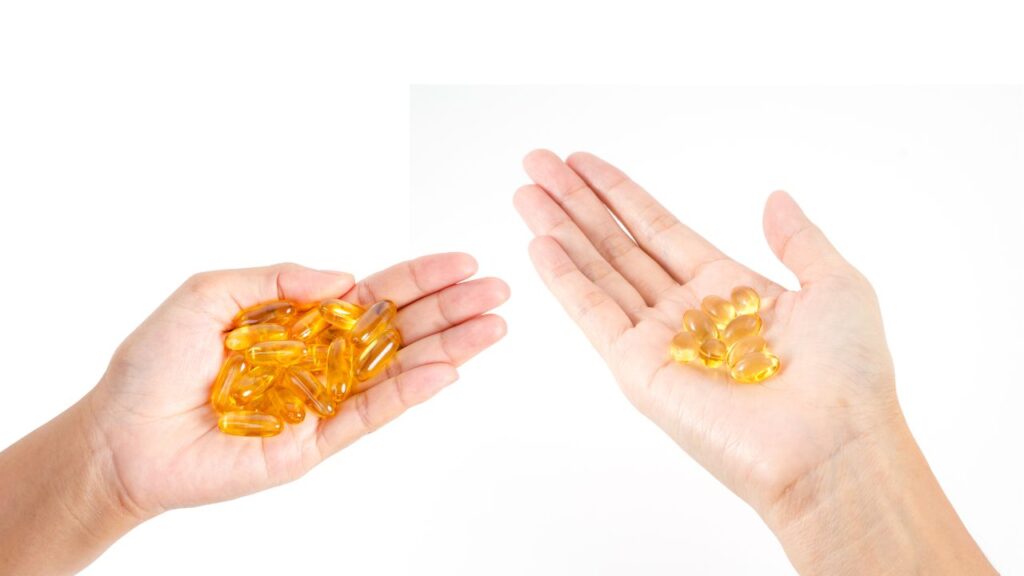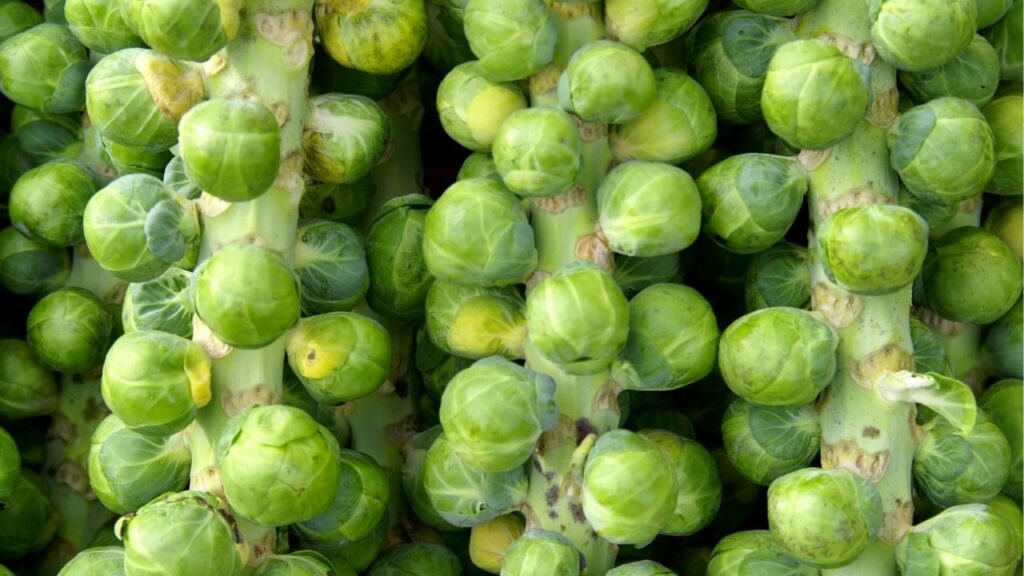Parsley, Basil, Oregano: Herbs That Are Good For Dogs
These three herbs have not only become culinary staples in cuisines across the world, but have also garnered attention for their potential anti-cancer properties thanks to some of the powerful bioactive compounds they possess.
Key Takeaways
- Dogs can have basil.
- Oregano is good for dogs.
- Curly parsley is OK for dogs, but other varieties can be toxic.
Parsley, Basil, and Oregano for Dogs
Basil (Ocimum basilicum), oregano (Origanum vulgare), and parsley (Petroselinum crispsum) are leafy herbs with a near global presence thanks to their flavorful taste.
But these herbs have also long been thought to have medicinal properties. They’ve been used for such purposes for millennia, with knowledge of their nutraceutical value passed down through generations and across cultures.2
Basil is a member of the mint family. It’s native to India and other tropical regions in Africa and South East Asia, but has since reached levels of global cultivation.3 While there are several types of basil, nearly all of them have the same typical green leaves, although a few varieties may reveal hues of deep purple.3
Oregano is also a member of the mint family, but is native to the Mediterranean region. Its popularity in cooking dishes has likewise spread and it is now grown throughout the northern hemisphere. There are a number of subspecies and varieties.4
Parsley is part of the Apiaceae family, which consists mostly of aromatic, or pleasant smelling, flowering plants. Like oregano, it’s also native to the Mediterranean but is now widely used in European, Middle Eastern, Brazilian, and American cuisine. Parsley has an erect stem and is identifiable by its feather-like bight green leaves.5
Benefits and Evidence for Use
The research is undeniable – food and cancer risk are inherently linked. Studies across the world are examining how diet influences cancer susceptibility, cancer type, and treatment efficacy.
Herbs like basil, oregano, and parsley are no exception. For example, a study conducted from 1993 to 1996 in Italy found that consuming parsley and oregano was connected to a reduced risk of developing lung cancer.10
Benefits of Basil for Dogs
Basil leaves are considered to be antimicrobial and can benefit brain health, heart health, and may play a role in preventing some cancers.1
Benefits of Oregano for Dogs
Oregano is a great source of antioxidants. It may also be antibacterial, anti-inflammatory, and antiviral.6
As well as being high in antioxidants, oregano has been effective against several cancer cell lines in the laboratory setting. More study is needed to determine how this might be incorporated in cancer treatments.6
Benefits of Parsley for Dogs
Parsley is used for a number of reasons. It is an herb known to help with high blood pressure, bone health, and eye health.36 In one study using rats, parsley provided a laxative effect by reducing the amount of water absorbed in the colon.7
Similar to basil, parsley is known to have anti-inflammatory properties, making it useful for subduing the pain associated with arthritis and enhancing circulatory system function.8
When its seeds and leaves are made into an ointment and applied topically, parsley can even be used to get rid of ectoparasites.9
In regard to cancer, parsley has been noted to contain antioxidants, flavonoids, and vitamin C, all of which can help support the body and may assist with fighting and preventing cancer.36
Phytochemicals
So, what is it about basil, parsley, and oregano that make them cancer-fighting super foods? It’s what they contain – small compounds called phytochemicals.2
Phytochemicals are naturally occurring bioactive molecules produced by plants.11
Polyphenols are a class of phytochemicals responsible for the color, taste, and smell of different botanical species, including herbs.11 But polyphenols go far beyond the senses, as they also possess anti-inflammatory, antioxidant, neuroprotective, cardioprotective, and anticancer abilities.11
The list of beneficial polyphenols in basil, oregano, and parsley is extensive. It includes flavonoids such as apigenin, quercetin, luteolin, and kaempferol, as well as diterpenes like carnosol, all of which possess high antioxidant and anticancer activity.12,13,2
Apigenin
Apigenin is the most active substance found in parsley.14 Dried basil has about 18 milligrams of apigenin per 100 grams, while dried oregano has a whopping 254 milligrams of apigenin per 100 grams.14
Apigenin appears to play a large role in the cell cycle and in inducing apoptosis, or regulated cell death, and thus can play a large role in preventing and slowing down cancer.15
Apigenin can slow down cancer by interfering with the cell cycle. A study on human cervical cancer cells found that they were unable to divide when exposed to apigenin.15 Similarly, exposing human breast and prostate cancer cells to apigenin resulted in apoptosis (cell death).20,21
Apigenin may also help to modify the role of p53, a powerful gene that codes for a protein that helps to stop tumors from developing and growing. One study that exposed apigenin to colon cancer cells with a mutated p53 gene found that the compound appeared to help the gene work correctly again.22
The concentration of apigenin needed to have anticancer qualities is largely unknown, but dosage does seem to matter. In one study, low concentrations of apigenin were effective at reducing the occurrence of DNA damage, a common cause of cancer, but at high concentrations, the opposite happened.23 Mistakes in DNA replication in healthy cells can result in cancer.
Quercetin
Quercetin is relatively well-studied because it’s the most bioactive member of the flavonoid class.12,16 It is known to be a super antioxidant and is also thought to have anti-inflammatory properties.16
Quercetin is the flavonoid most consumed by humans.16 Study results are mixed and clinical studies are still needed to discern the efficacy of its anti-cancer properties.16
A study on prostate cancer in rats found that those treated with quercetin saw increases in levels of antioxidant enzymes and proteins responsible for inducing apoptosis.24
However, a second study on rats induced with breast cancer found that quercetin did not give any protection against cancer development and may instead have exacerbated it.25
Kaempferol
Kaempferol is another well-known flavonoid. Epidemiological studies have garnered support for its health benefits. Kaempferol serves to protect the nervous system and the cardiovascular system, and is also an anti-inflammatory, antioxidant, antimicrobial, and antitumor compound.16
Kaempferol has been shown to help prevent and treat bladder, blood, bone, brain, breast, cervical, colon, kidney, liver, lung, oral, ovarian, pancreatic, prostate, and stomach cancers, though none of these studies were in dogs.26
Kaempferol has shown promise in treating osteosarcoma, one of the top five common forms of cancer in dogs.26,27 One study found that kaempferol significantly decreased the viability of human bone cancer cells.29
Findings were supported by a follow-up experiment that exposed mice with bone cancer to kaempferol.29 Results showed that the mice who were exposed experienced an inhibition of tumor growth in comparison to the control group of mice not given kaempferol.
Some flavonoids may be more effective than others. For example, in a study on human leukemia cells, apigenin and quercetin were better at inducing apoptosis than kaempferol or myricetin.30 However, kaempferol has an easier time getting into the body’s blood stream, a concept termed bioavailability, because it can dissolve in fats, oils, and lipids.31
Luteolin
Luteolin is the most active substance found in oregano, though this varies based on the state of the herb.14 For example, dried oregano has 301 milligrams of luteolin per 100 grams, but only 3 milligrams per 100 grams when fresh.14
Dried basil contains about half the amount of dried oregano, at 127 milligrams of luteolin per 100 grams.14
Luteolin appears to play a large role in cellular pathways that signal for the growth of blood vessels that can promote tumor growth.17
Luteolin is found in relatively low amounts in most foods when compared to quercetin and kaempferol.18 Nevertheless, its remarkable anticancer properties make it worth mentioning.
It has been shown to inhibit the proliferation of tumor cells, stop the cell cycle from occurring, halt the development of blood vessels in an effort to “starve” tumors, increase the total level of antioxidants in the body, interact with molecular targets in biological pathways involved with cancer development, and assist in upregulating tumor suppressor genes like p53.18
Carnosol
Carnosol is a diterpene compound. Diterpenes are gaining wider and wider support for having antimicrobial, anti-inflammatory, antioxidant, and anticancer properties.2 Carnosol helps plants adapt to harsh climatic conditions, and is therefore found in abundance in hardier leafy herbs.19
A study that examined the effect of carnosol on human prostate cancer cells found that it stopped cell division.2
Additional testing showed that carnosol has the ability to interact with several protein signaling pathways that “upregulate,” or increase the use of, proteins involved in preventing cancer.32 Of particular note is that carnosol didn’t appear to negatively impact healthy prostate cells, but only targeted unhealthy ones.32
Carnosol can also be used topically. One study that applied rosemary (Salvia rosemarinus), an herb rich in carnosol, to mice with skin tumors found that they had 54% to 64% fewer tumors than those in the control group.33
Other Compounds
Other compounds found in basil, oregano, and parsley include:12
- Eugenol
- Ursolic acid
- Methyl cinnamate
- 1,8-cineole
- α-terpinene
- Anthocyanins
- β-sitosterol
- Caffeic acid
- Carvacrol
- Catechin
- Cintronellol
- Farnesol
- Geraniol
- Limonene
- Menthol
- Myricetin
- p-coumaric acid
- Rosmarinic acid
- Rutin
- Safrole
- Tannin
- Thymol
Collectively, these are also known to have health benefits, but are typically found in smaller amounts or are not as strongly connected to cancer prevention and treatment.
Challenges with Bioavailability
Bioavailability is a large barrier to the use of phytochemicals in medicinal practice, including veterinary.
Polyphenols are known to have a low intestinal absorption rate,11 and if not enough of the compound is taken into the body, then the body can’t reap its benefits.
Researchers in one study prepared a Tartary buckwheat extract with 5% quercetin.34 The extract was fed and intravenously delivered to six Beagle dogs. Unfortunately, the study found that quercetin was very poorly absorbed when taken by mouth.34
Alternatively, another study that administered a rosemary extract rich in carnosol to rats found relatively high levels of the compound in their tissues, suggesting that carnosol’s bioavailability was high.11
It’s unclear how much basil, parsley, or oregano would have to be given to your dog to reach the concentration of compounds necessary for a beneficial effect to be observed. However, studies have shown that even micromolar levels of polyphenols can impact biological function, so there’s hope that trace amounts can have a big impact.11
The herb itself likely plays a large role. For example, parsley has the highest quantity of flavonoids in comparison to basil or oregano at 4,845.5 milligrams per 100 grams.14 A higher number of flavonoids to start with may translate to a higher number that are absorbed by your dog’s body.
When to Not Use Parsley, Basil, Oregano for Dogs
Basil is non-toxic for dogs, but too much may induce loose stools, discomfort, and vomiting.35
Oregano is safe for dogs in appropriate amounts, but poisoning can occur if your dog eats too much. Digestive upset, vomiting, and diarrhea may be observed.35 Oregano oil should not be given to dogs because it is too strong.35
Oregano can lower blood sugar, so it may not be a good fit for dogs who are diabetic.37 Oregano may also not be safe for pregnant dogs, and should be discontinued before surgery to reduce the risk of abnormal bleeding.37
Be careful when it comes to parsley. Curly parsley is purportedly safe for dogs, but other parsley types can cause dermatitis (skin irritation due to sunburn) in dogs when eaten in large amounts.35 Parsley can also induce labor, so you’ll want to avoid giving it to pregnant dogs.5
How to Prepare Parsley, Basil, and Oregano for Dogs
If you are giving herbs to your dog fresh, wash them first. Simply rinse with cool water for several seconds.
You can give your dog parsley, basil, and oregano at every meal as a healthy addition to their food.38 It can even be given in conjunction with other cancer-fighting additives like sardines, blueberries, coconut oil, garlic, and ginger root.38
How Much to Feed
Despite the benefits of herbs like basil, parsley, and oregano, moderation is still key to avoid any potential problems. Different sources offer differing measurements. You should consider your dog’s size and health needs, and then consult with your vet on how much to give them.
As an example, you can add one to two teaspoons of freshly minced parsley, basil, and oregano per 50 pounds twice a day, or one medium-sized basil leaf per day.38
Smaller dogs should get less than these amounts. Dogs under 15 pounds should get no more than a pinch of basil per day while larger dogs can get up to one teaspoon of dried basil per day.35
Parsley can be given in fairly small amounts of ½ teaspoon per 10 pounds of body weight.35
Where to Get Parsley, Basil, and Oregano for Dogs
Basil, oregano, and parsley typically come fresh and in dried forms that range from whole leaves to a near powder consistency.
The density of flavonoids may differ based on the herb’s form. For example, apigenin is higher in dried oregano than fresh.14 However, fresh herbs have the benefit of typically being tastier and more fragrant, which your dog may enjoy.39
Basil and oregano can often be found in oil form, some of which are formulated specifically for dogs.
You can find herbs from reputable online vendors,38 in grocery stores, at farmer’s markets, in plant nurseries, and at home improvement stores in spring and summer. You can even grow and care for your own. Seeds and saplings are readily available for sale.
You may live in an area where herbs naturally grow outside of controlled cultivated environments. Proceed with caution if you are picking these yourself.
For example, parsley resembles poison hemlock (Conium maculatum) and fool’s parsley (Aethusa cynapium), which is also called dog poison.5 It’s probably best to avoid foraging for wild growing herbs all together just to be on the safe side.
You can dry fresh herbs by hanging them in a location that has dry air and adequate ventilation. If you lack space to hang them or time to dry them, you can also lay herbs down in a tray and bake them at low heat. You can alternatively use a dehydrator to accomplish a similar outcome. This is especially recommended if you’ll be drying herbs in bulk.39
Consider Organic
Buy organic if you can. While exact legal definitions vary form country to country, in general organic produce is grown with synthetic pesticides and not exposed to unnecessary chemical or synthetic additives.40
These practices and additives can change the chemical composition of the herb, which may reduce their anticancer abilities. For example, organic herbs have been found to have higher flavonoid concentrations than conventionally grown herbs.40 It should be noted that conventionally grown herbs had higher levels of beta-carotene.40
Location Affects Nutrients
Keep in mind that compounds in herbs can vary based on variety and source region.
For example, oregano from Greece and oregano from Mexico have different levels of antioxidants, which may be due to different growing seasons.41
Where you source from may make a difference, so it’s a good idea to check labels to determine where the herb was grown if you want to keep tabs on differences your dog experiences based on the source region of the herb you feed them.
- McCulloch M. Basil: Nutrition, health benefits, uses and more. Healthline. https://www.healthline.com/nutrition/basil. Published October 17, 2018. Accessed April 17, 2023.
- Johnson JJ, Syed DN, Heren CR, Suh Y, Adhami VM, Mukhtar H. Carnosol, a dietary diterpene, displays growth inhibitory effects in human prostate cancer PC3 cells leading to G2-phase cell cycle arrest and targets the 5′-AMP-activated protein kinase (AMPK) pathway Pharm Res. 2008;25:2125-2134.
- Simon JE. Basil. New Crop FactSHEET. 1995. https://web.archive.org/web/20170502080706/https://hort.purdue.edu/newcrop/CropFactSheets/basil.html. Accessed December 31, 2022.
- Royal Botanic Gardens. Origanum vulgare L. Plants of the World Online. No publication date available. https://powo.science.kew.org/taxon/urn:lsid:ipni.org:names:453395-1. Accessed on December 31, 2022.
- No author. Parsley. Drugs.com. No publication date available. https://www.drugs.com/npc/parsley.html. Accessed on December 31, 2022.
- Ajmera R. 6 science-based health benefits of oregano. Healthline. https://www.healthline.com/nutrition/6-oregano-benefits#TOC_TITLE_HDR_2. Published October 27, 2017. Accessed April 17, 2023.
- Kreydiyyeh SI, Usta J. Diuretic effect and mechanism of action of parsley. J Ethnopharmacol. 2002;79:353-357.
- Hoffman D. Medical Herbalism, The Science Principles and Practices of Herbal Medicine. Healing Arts Press;2004.
- Wynn SG, Fougère BJ. Veterinary Herbal Medicine: A Systems-Based Approach. Vet Herb Med. 2007;291-409. doi:10.1016/B978-0-323-02998-8.50024-X .
- Fortes C, Forastiere F, Farchi S, Mallone S, Trequattrinni T, Anatra F, Schmid G, Perucci CA. The protective effect of the Mediterranean diet on lung cancer. Nutr Cancer 2009;46:30-37.
- O’Neill EJ, Den Hartogh DJD, Azizi K, Tsiani E. Anticancer properties of carnosol: a summary of in vitro and in vivo evidence. Antioxidants. 2020;9:961.
- Kaefer M, Milner JA. The role of herbs and spices in cancer prevention. J Nutr Biochem. 2008;19(6):347-361.
- Hossain, M.B.; Patras, A.; Barry-Ryan, C.; Martin-Diana, A.B.; Brunton, N. Application of principal component and hierarchical cluster analysis to classify different spices based on in vitro antioxidant activity and individual polyphenolic antioxidant compounds. J Funct Foods. 2011;3:179–189.
- Drețcanu G, Știrbu I, Leoplold N, et al. Chemical structure, sources and role of bioactive flavonoids in cancer prevention: A Review. Plants. 2022;11(9):1117. doi:10.3390/plants11091117
- Zheng PW, Chiang LC and Lin CC: Apigenin induced apoptosis through p53-dependent pathway in human cervical carcinoma cells. Life Sci. 2005;76:1367-1379.
- No author. Quercetin – Purported benefits, side effects & more. Memorial Sloan Ketting Cancer Center. May 14, 2020. https://www.mskcc.org/cancer-care/integrative-medicine/herbs/quercetin. Accessed on January 6, 2023.
- Calderón-Montaño JM, Burgos-Morón E, Pérez-Guerrero C, López-Lázaro M. A review on the dietary flavonoid kaempferol. Mini Rev Med Chem. 2011;11(4):298-344. doi:10.2174/138955711795305335
- Seelinger G, Merfort I, Wölfle U, Schempp CM. Anti-carcinogenic effects of the flavonoid luteolin. Molecules. 2008;13(10):2628-2651. doi:10.3390/molecules13102628 .
- Loussouarn M, Krieger-Liszkay A, Svilar L, Bily A, Birtić S, Havaux M. Carnosic Acid and Carnosol, Two Major Antioxidants of Rosemary, Act through Different Mechanisms. Plant Physiol. 2017;175(3):1381-1394. doi:10.1104/pp.17.01183
- Brusselmans K, Vrolix R, Verhoeven G and Swinnen JV: Induction of cancer cell apoptosis by flavonoids is associated with their ability to inhibit fatty acid synthase activity. J Biol Chem. 2005;280:5636-5645.
- Way TD, Kao MC and Lin JK: Degradation of HER2/neu by apigenin induces apoptosis through cytochrome c release and caspase-3 activation in HER2/neu-overexpressing breast cancer cells. FEBS Lett. 2005;579:145-152.
- Takagaki N, Sowa Y, Oki T, Nakanishi R, Yogosawa S and Sakai T: Apigenin induces cell cycle arrest and p21/WAF1 expression in a p53-independent pathway. Int J Oncol. 2005;26:185-189.
- Horvathova K, Novotny L and Vachalkova A: The free radical scavenging activity of four flavonoids determined by the comet assay. Neoplasma 2003;50:291-295.
- Sharmila G, Bhat FA, Arunkumar R, et al. Chemopreventive effect of quercetin, a natural dietary flavonoid on prostate cancer in in vivo model. Clin Nutr. 2014;33(4):718-726. doi:10.1016/j.clnu.2013.08.011.
- Singh B, Mense SM, Bhat NK, et al. Dietary quercetin exacerbates the development of estrogen-induced breast tumors in female ACI rats. Toxicol Appl Pharmacol. 2010;247(2):83-90. doi:10.1016/j.taap.2010.06.011.
- Imran M, Salehi B, Sharifi-Rad J, et al. Kaempferol: A Key Emphasis to Its Anticancer Potential. Molecules. 2019;24(12):2277.
- Imran M, Salehi B, Sharifi-Rad J, et al. Kaempferol: A key emphasis to its anticancer potential. Molecules. 2019;24(12):2277. doi:10.3390/molecules24122277
- No author. Top 5 cancers in dogs. Fetch Specialty & Emergency Veterinary Centers. No date available. https://fetchvets.com/top-5-cancers-in-dogs/. Accessed January 6, 2023.
- Huang WW, Chiu YJ, Fan MJ, et al. Kaempferol induced apoptosis via endoplasmic reticulum stress and mitochondria-dependent pathway in human osteosarcoma U-2 OS cells. Mol Nutr Food Res. 2010;54(11):1585-1595. doi:10.1002/mnfr.201000005.
- Chen D, Daniel KG, Chen MS, Kuhn DJ, Landis-Piwowar KR and Dou QP: Dietary flavonoids as proteasome inhibitors and apoptosis inducers in human leukemia cells. Biochem Pharmacol. 2005;69:1421-1432.
- Crespy V, Morand C, Besson C, Cotelle N, Vezin H, Demigne C, Remesy C. The splanchnic metabolism of flavonoids highly differed according to the nature of the compound. Am J Physiol. 2003;284:G980–G988. doi: 10.1152/ajpgi.00223.2002.
- Johnson JJ. Carnosol: A promising anti-cancer and anti-inflammatory agent. Cancer Lett 2011;305(1):1-7.
- Huang MT, Ho CT, Wang ZY, et al. Inhibition of skin tumorigenesis by rosemary and its constituents carnosol and ursolic acid. Cancer Res. 1994;54(3):701-708.
- Liu Y, Gan J, Liu W, et al. Pharmacokinetics and Novel Metabolite Identification of Tartary Buckwheat Extracts in Beagle Dogs Following Co-Administration with Ethanol. Pharmaceutics. 2019;11(10):525. doi:10.3390/pharmaceutics11100525
- Turner B. Herbs & spices for dogs. Preventive Vet. https://www.preventivevet.com/dogs/herbs-spices-for-dogs. Published November 10, 2022. Accessed April 17, 2023.
- Zamarripa M. 8 impressive health benefits and uses of parsley. Healthline. https://www.healthline.com/nutrition/parsley-benefits. Published April 5, 2019. Accessed April 17, 2023.
- Oregano. MedlinePlus. https://medlineplus.gov/druginfo/natural/644.html. Published April 26, 2022. Accessed April 17, 2023.
- Dressler D, Ettinger S. The Dog Cancer Survival Guide. Maui Media; 2011.
- No author. Benefits of Cooking with Fresh Organic Herbs. Earth’s Ally. No publication date available. https://earthsally.com/gardening-basics/benefits-of-cooking-with-fresh-organic-herbs.html. Accessed December 31, 2022.
- Hallmann E, Sabała P. Organic and conventional herbs quality reflected by their antioxidant compounds concentration. Applied Sciences. 2020;10(10):3468. doi:10.3390/app10103468
- Dragland S, Senoo H, Wake K, Holte K, Blomhoff R. Several culinary and medical herbs are important sources of dietary antioxidants. J Nutr. 2003;133(5):1286-1290.
Topics
Did You Find This Helpful? Share It with Your Pack!
Use the buttons to share what you learned on social media, download a PDF, print this out, or email it to your veterinarian.






